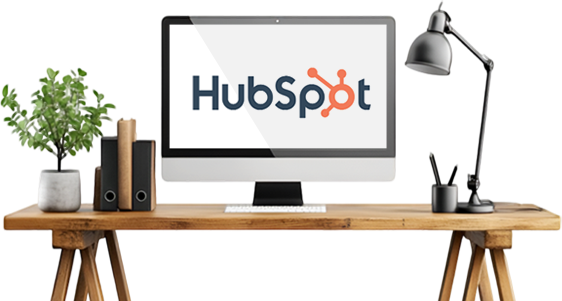Time tracking is a critical yet often overlooked aspect of agency management. When done correctly, it ensures accurate client billing, helps manage resources efficiently, and enhances overall profitability. However, many agencies struggle with inconsistent tracking, unbilled hours, and inefficient resource allocation. By implementing the right time-tracking strategies, agencies can streamline operations, maximize revenue, and gain valuable insights into their workflows. This guide explores best practices for time tracking to help agencies boost their profitability while maintaining efficiency.
Looking to enhance your agency's efficiency with automation? Explore how automation can transform your agency here.
Why Time Tracking Matters for Agencies
For agencies, time is money. Every project, client interaction, and internal meeting represents a cost that must be accounted for to maintain profitability.
Ensuring Accurate Client Billing
Without precise tracking, agencies risk underbilling or overbilling clients, which can lead to revenue loss or strained relationships. Proper time tracking ensures that every billable hour is recorded and invoiced correctly.
Identifying Resource Allocation Inefficiencies
Tracking time allows agencies to assess whether resources are being utilized effectively. It highlights team members who may be overburdened or underutilized, enabling managers to make data-driven workload adjustments.
![]()
Enhancing Project Profitability and Forecasting
With historical time-tracking data, agencies can better estimate project timelines, prevent scope creep, and improve overall profitability. Insights gained from past projects help refine future pricing models and budget projections.
Improving Team Productivity and Accountability
Employees become more mindful of their time usage when tracking is in place. This fosters accountability, enhances productivity, and ensures that project deadlines are met efficiently.
Choosing the Right Time-Tracking Tools
Selecting the right time-tracking software is crucial to ensuring efficiency and ease of use.
Automation for Seamless Tracking
Manual time tracking can be time-consuming and prone to errors. Tools with automation features, such as AI-powered tracking and auto-logging, can significantly reduce the burden on employees while improving accuracy.
Integrations with Project Management and Invoicing Tools
A time-tracking tool should integrate seamlessly with your existing systems, such as HubSpot, Asana, Trello, or QuickBooks, to streamline invoicing and project management.
Advanced Reporting and Analytics
Detailed reporting and analytics provide insights into project profitability, team efficiency, and time utilization. This data helps agencies make informed decisions and optimize processes.
User-Friendly Interface
The ease of use is critical for team adoption. A simple and intuitive interface ensures employees can log time effortlessly without it becoming a tedious task.
Popular Time-Tracking Tools for Agencies
- Toggl Track: Simple and effective for tracking billable hours.
- Harvest: Ideal for invoicing and budgeting alongside time tracking.
- Clockify: A free tool with robust reporting features.
- Hubstaff: Includes workforce monitoring and productivity tracking.
Best Practices for Effective Time Tracking
To get the most out of time tracking, agencies should implement these best practices:
Set Clear Guidelines for Time Logging
Agencies should establish clear policies on what constitutes billable vs. non-billable hours. Different roles may require different tracking methods, so setting daily or weekly expectations helps maintain consistency.
Automate Where Possible
Reducing manual entry can significantly improve accuracy. Integrate time-tracking tools with project management software and invoicing systems to ensure seamless logging of work hours.
![]()
Regularly Review and Analyze Data
Conducting weekly or monthly time audits ensures accuracy. Managers should use reports to identify inefficiencies, such as tasks that take longer than expected or excessive non-billable hours.
Encourage Team Adoption and Accountability
Resistance to time tracking often stems from unclear expectations or cumbersome processes. Training employees on its importance and showing them how it improves workload management can increase compliance.
Avoiding Common Time-Tracking Mistakes
Even with the right tools and policies, agencies can fall into common pitfalls. Here are mistakes to avoid:
Relying on Manual Tracking Without Automation
Manual tracking is prone to errors and can be time-consuming. Automated tracking significantly reduces the chances of missed entries and improves efficiency.
Not Differentiating Between Billable and Non-Billable Hours
Failing to categorize hours properly can lead to inaccurate invoicing and lost revenue. Agencies should establish clear definitions of billable vs. non-billable tasks.
Failing to Review and Optimize Time-Tracking Data
Tracking data without regular analysis misses opportunities to refine processes and improve efficiency. Regularly reviewing data ensures agencies stay on top of their resource allocation.
Ignoring Employee Feedback on Tracking Processes
Employees may resist time tracking if it feels cumbersome. Gathering feedback and making necessary adjustments can improve adoption rates and ensure smooth implementation.
Leveraging Time Tracking to Increase Profitability
Accurate time tracking isn’t just about monitoring hours; it’s a tool for boosting profitability.
Refining Pricing Models with Tracked Data
Analyzing historical project data ensures that pricing reflects actual effort and value, preventing undercharging.
Adjusting Workload Distribution
By identifying employees who are overburdened, agencies can reallocate tasks to prevent burnout and optimize efficiency.
Improving Client Proposals
Using real-time insights from previous projects allows agencies to create more accurate project estimates and prevent scope creep.
Enhancing Decision-Making with Performance Metrics
Time-tracking reports provide valuable insights that help agencies make data-driven decisions, such as hiring new team members or adjusting service offerings.
Conclusion
Time tracking is a powerful tool for agencies looking to improve profitability, optimize resources, and enhance efficiency. By implementing best practices, choosing the right tools, and leveraging data insights, agencies can ensure accurate billing, improve project management, and make informed business decisions. If your agency is looking to scale while maintaining profitability, investing in an effective time-tracking system is a must.
Want to automate your agency’s workflows and improve efficiency? Learn how automation can transform your agency with Meticulosity today.
Frequently Asked Questions
1. How do I get my team to consistently track their time?
Make it easy by choosing a user-friendly tool, integrating it into daily workflows, and providing clear expectations. Reinforce its benefits, such as improved workload management and fair compensation.
2. What’s the best way to track time without micromanaging?
Focus on the insights and efficiency gains rather than strict oversight. Encourage a results-driven culture where employees see time tracking as a way to optimize work, not a control measure.
3. How can I ensure accurate reporting for client billing?
Set clear billable vs. non-billable time guidelines, use automated tracking, and conduct periodic audits to verify data accuracy.
4. Should I track time for internal tasks and meetings?
Yes, tracking internal time helps agencies understand overhead costs, identify inefficiencies, and optimize non-billable activities.
5. How do I balance efficiency with the overhead of time tracking?
Choose a tool with automation features to minimize manual entry and make reporting seamless. Regularly review processes to ensure they remain efficient and non-intrusive.






